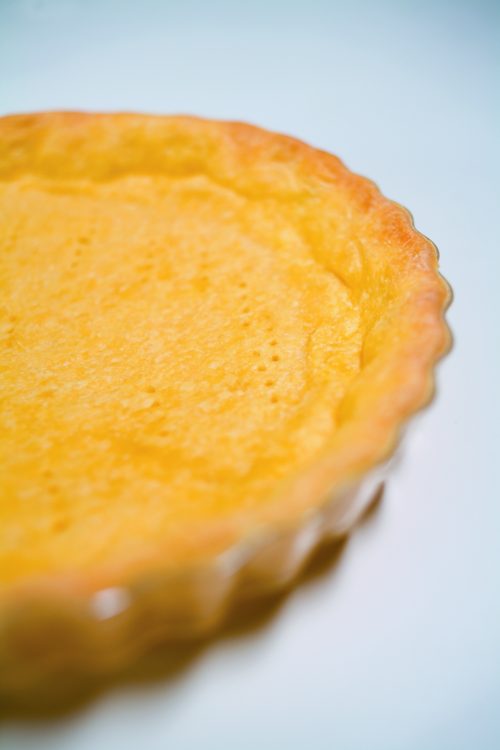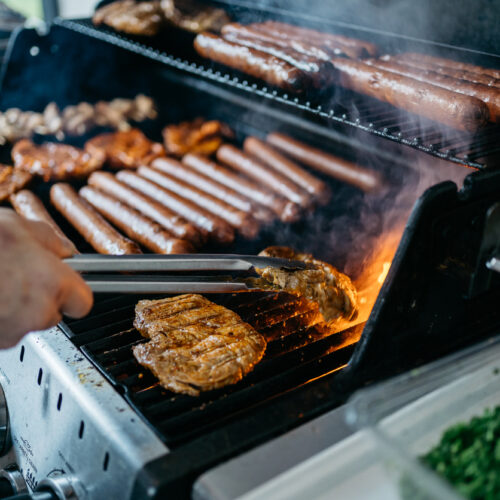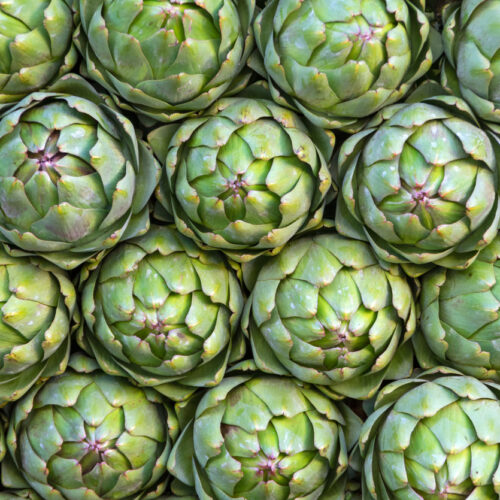
Here's everything you need to know to become a pastry expert, the healthy way.
Basic pastry-making rules
- The art of successful pastry making lies in accurate measuring and using the correct proportion of fat to flour.
- Always measure out all ingredients before starting.
- For healthier pastry, choose a lower-fat alternative to butter that is suitable for baking, such as Meadowlea Logicol Lite.
- Use plain white flour. This works best as it gives a light, crisp result. Self-raising flour produces a soft, spongy pastry.
- Always preheat the oven to the temperature stated in the recipe.
- Use a fine non-stick cooking spray to prepare tins. This means you will use a very small amount of oil.
- Choose metal loose-bottomed tins if buying new flan tins. They make the removal of pies and flans very easy.
Shortcrust pastry-making rules
- Everything needs to be kept cool when making the dough – the work surface, equipment, ingredients and your hands.
- It is important to rest pastry before baking, otherwise it will shrink during baking. Pastry is best rested in the fridge, well wrapped in plastic wrap.
- Take care when adding the liquid to a dough; too much will result in a tough end product, too little will produce a crumbly pastry which is difficult to handle. It is a good idea to use a jug with a good pourer to control the amount added. Use chilled water and just enough to bind the dough.
- When rolling out pastry, a cool surface is ideal. Dust the rolling pin and work surface – never the pastry – very lightly with flour.
-
Roll the dough lightly and evenly in one direction only. Always roll away from you using light, firm strokes and rotate the pastry frequently to keep an even shape and thickness. Avoid over-rolling the pastry as it will shrink
badly during cooking.
Technique for chous pastry
Traditionally used for profiteroles, this pastry is perfect for lower-fat desserts.
What you will need
- A large wooden spoon and a solid-based pan, ideally non-stick.
- A jug with a good lip for controlled pouring of the beaten eggs is also useful.
Step 1 Sieve 1 cup plain flour and set to one side. Heat 75g low-fat spread with 1 cup cold water in a non-stick pan, until fat melts. Bring mixture to the boil.
Step 2 Remove from heat and tip in flour. Beat thoroughly using a wooden spoon until mixture is smooth.
Step 3 Return pan to heat for 1 minute only, stirring continuously, until mixture becomes a ball of dough. Cool slightly before adding eggs.
Step 4 Beat 3 eggs together. Add to dough, a little at a time, beating with a wooden spoon until mixture forms a smooth shiny paste. It is now ready to use.
Technique for shortcrust pastry
- Rubbing in: To make shortcrust pastry, the fat is rubbed into the flour. To do this, cut the fat into small pieces and add to the flour and salt. Mix briefly with a round-bladed knife to coat the fat pieces with flour. Then using your fingertips, pick up a small amount of the mixture at a time and rub the fat and flour together to break the fat down into tiny pieces. Do this as lightly and quickly as possible until the mixture resembles fine crumbs.
-
Adding liquid:Pour this over the surface of the rubbed-in mixture; uneven addition may cause blistering once the pastry is cooked. Use a round-bladed knife to mix in the liquid. You may need a little more or less than the
quantity stated in the recipe. Once the dough begins to hold together, collect it into a ball and knead lightly for a few seconds. The dough is now ready to use. - Baking blind: When a recipe tells you to 'bake blind', it means bake or partially bake the pastry case without its filling. This prevents a soggy pastry base. Prick the base of the pastry with a fork and line with a large piece of greaseproof paper. Fill with ceramic baking beans or dried beans or rice. Bake at the suggested temperature for 10-15 minutes or until the case looks set. Remove the paper and beans and bake for a further 5 minutes until the base is firm and lightly coloured, for a partially cooked case. For complete baking, cook for a further 10-15 minutes until crisp and golden.
Tasty ideas for tart fillings
Once you have cooked your pastry cases, you can try all sorts of fillings:
- For a sweet filling, add Greek yoghurt flavoured with honey to your pastry case. Top with frozen blueberries, thawed. Drizzle the berries with no-added-sugar jam for extra sweetness. Mix some sliced seasonal fruit with sliced pineapple and kiwifruit. Toss in warmed no-added-sugar apricot jam. Use to fill the pastry cases.
- Mix 1 tablespoon curry paste with 200g natural yoghurt and 2 tablespoons fruity chutney. Add cooked diced chicken, thinly sliced spring onions, cherry tomatoes and sweet corn. Toss to coat lightly before filling the tarts.
- For a vegetarian option, mix chopped sun-dried tomatoes with chopped peppadew peppers and fresh basil leaves, roughly torn. Fill the base of the tart with reduced-fat soft cheese and top with the vegetables.
Fantastic finds for pastry-baking the healthy way
- Wattie's Diced Apples are great for lower-fat pastry fillings and for muffins with a bit of texture.
- Delish Peach Pie Filling, with no added sugar, is good for fruit-filled pies and low-fat sponges.
- Cotterill & Rouse Sun-dried Tomatoes, marinated and sliced, are 99% oil free and give dishes a founded tomato flavour. Perfect for flans and also muffins.
- Peppadew Whole Sweet Peppers are ideal in savoury flans and are available in hot and mild varieties. You will find the tomatoes and peppers sold in jars in the canned tomato aisle of your supermarket.
- Irvine's Reduced Fat Savoury Shortcrust Pastry is a must for anyone short on time. Sold in packs of 5 sheets, the pre-rolled pastry is a good choice to keep in the freezer.
Try these delicious recipes
www.healthyfood.com










